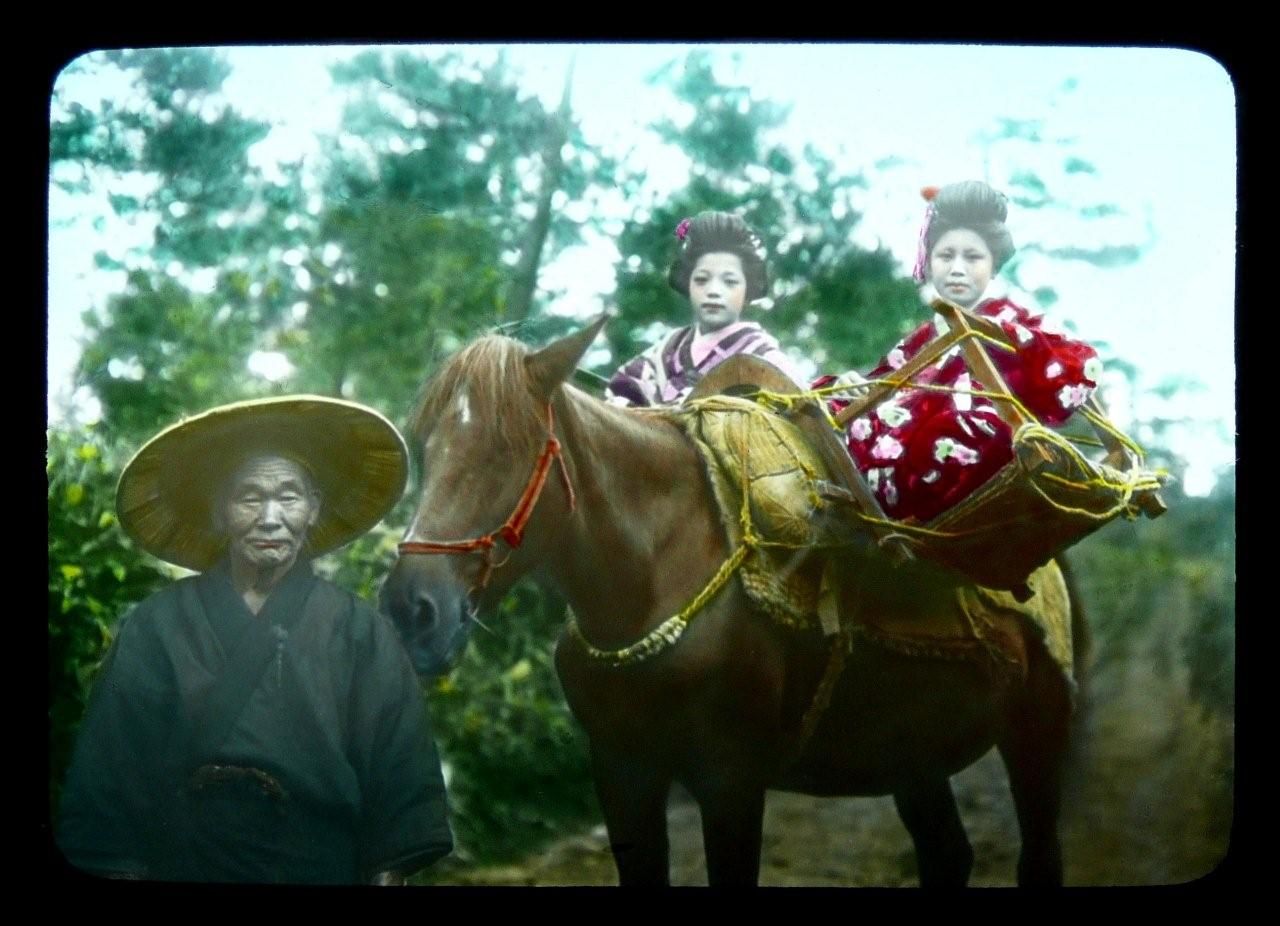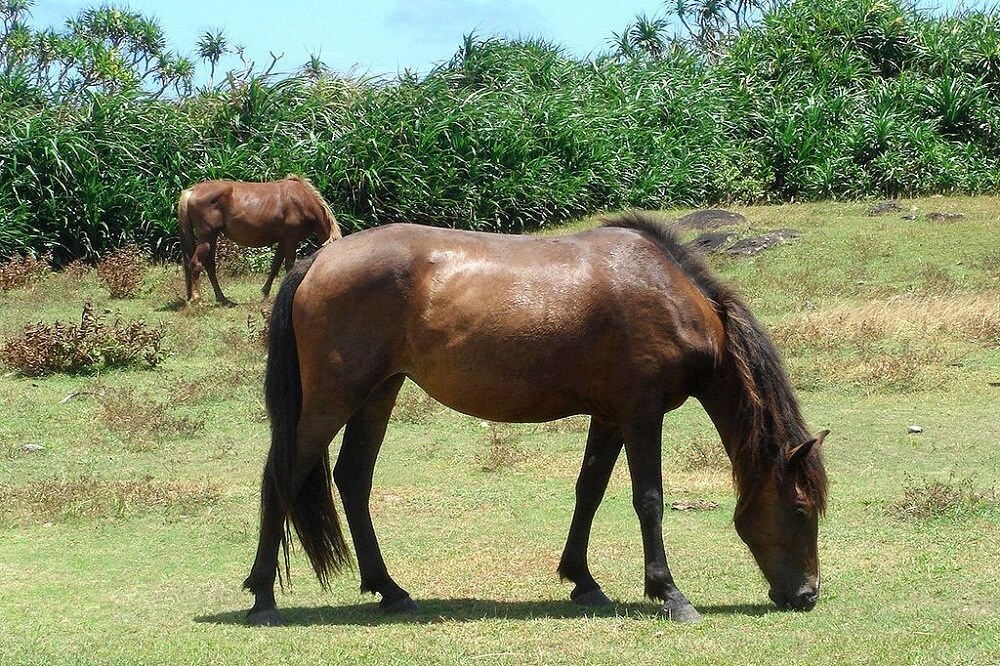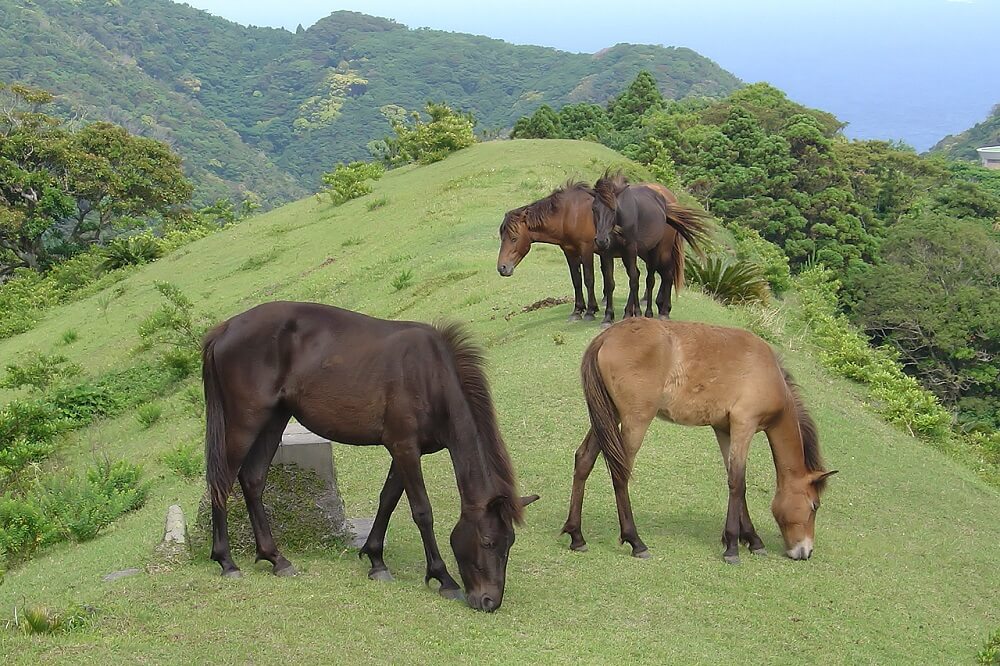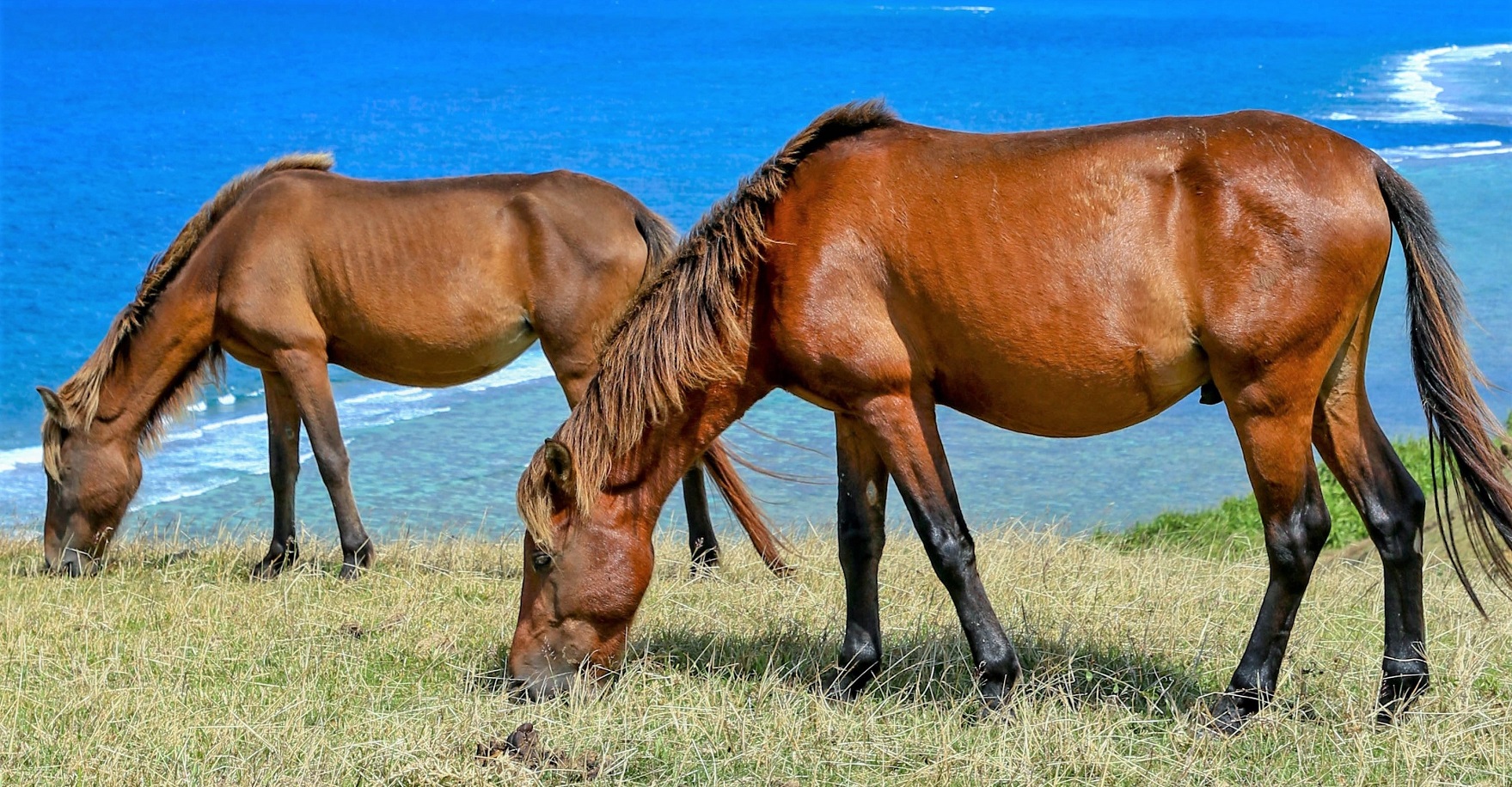Win a Free Trip to Japan!
Experience cherry blossoms and ancient temples
In the rich tapestry of Japanese history, horses in Japan play a pivotal role that extends beyond mere utility. Whether you’re curious about when did Japan get horses or intrigued by the equine culture in Japan, this guide delves into the depth of Japan’s equestrian heritage. The journey of these majestic animals into Japan is nothing short of fascinating, revealing how they transformed from exotic newcomers to indispensable allies in ancient warfare. Notably, the most common breed for war horses during those times left an indelible mark on Japanese tradition. Yet, there’s much more to explore, from significant Japanese horse breeds that have risen to prominence to the modern-day splendor of horse racing events in Japan. As we uncover this enthralling saga, you’ll also learn about the evolution and preservation of Japanese horse traditions. So, saddle up as we trot through the eras, discovering how horses in Japanese history symbolize strength, culture, and continuity.
The Arrival of Horses in Japan
Understanding the arrival of horses in Japan provides valuable insights into how these majestic creatures became an integral part of Japanese culture. While modern scholars continue to investigate, several key points illuminate this fascinating history.
When Did Japan Get Horses?
Evidence suggests that the arrival of horses in Japan occurred during the 3rd century AD. The exact timeline is still debated among historians, but significant importation occurred through interactions with neighboring regions, particularly Korea and China.

How Did Horses Get to Japan?
Horses likely arrived via several routes:
- Trade and Diplomacy: Early accounts indicate that diplomatic relations and trade exchanges with Korea and China brought the first Japanese horse breeds.
- Military Expeditions: Historians believe that horses were also part of military provisions, being transported by conquering forces or as diplomatic gifts.
- Sea Routes: Given Japan’s island geography, horses were brought across the sea in specially designed vessels.
Are Horses Native to Japan?
Horses are not native to Japan. The first equines were imported, and subsequent horse populations were established through controlled breeding programs and continuous importation.
Table: Key Points About Horse Arrival in Japan
| Aspect | Details |
|---|---|
| Era of Arrival | 3rd century AD |
| Primary Routes | Trade, military expeditions, and sea routes |
| Region of Origin | Korea and China |
| Key Purpose | Military use, trade, and diplomatic exchanges |
| Native Status | Not native, imported initially |
Influences and Impact
Post-arrival, horses rapidly integrated into various facets of Japanese society, particularly in military and agricultural domains. The equine culture in Japan began to flourish through careful breeding and the introduction of various Japanese horse breeds suited for warfare and agriculture.
Conclusion
Understanding the arrival of horses in Japan provides a framework for appreciating their profound impact on Japanese culture and history. As you explore other aspects like the most common breed for war horses and historical horse racing events in Japan, remembering these key points enhances the broader narrative of equine history in the region.
By delving into the intricate details of how Japan horse populations came to be, you gain a deeper appreciation for the historic significance of these noble creatures in Japanese society.
The Role of Horses in Ancient Japanese Warfare
Understanding the pivotal role horses in Japanese ancient warfare is crucial for comprehending their historical significance. Artifacts and records indicate that during the early Yamato period, equine power fundamentally altered the dynamics of battlefields in Japan.
Key Roles and Functions
- Transportation: Fast movement of warriors and supplies across challenging terrains.
- Combat: Essential for cavalry, providing a height and speed advantage during cavalry charges.
- Status Symbols: Nobles and samurai on Japan horse breeds showcased their status and power.
How Did Horses Transform Warfare?
Firstly, horses were the most common breed for war horses in ancient Japanese warfare. Cavalry units, primarily composed of samurai, were integral, aiding in swift and decisive strikes. Their speed allowed for surprise attacks and rapid mobilization.
When did Japan get horses? Historical evidence suggests an influx during the Kofun period (3rd to 6th century AD), brought by immigrants and traders from the Korean peninsula. This period saw a swift adaption of equine culture, with elite warriors adopting horse-mounted combat.
Noteworthy Breeds
Japanese horse breeds specifically bred for warfare included:
- Kiso Horse: The most common breed for war horses due to their resilience and adaptability.
- Misaki Horse: Known for their agility, crucial in tactical maneuvers.
Vital Statistics in a Table
| Function | Purpose |
|---|---|
| Transportation | Fast movement of warriors and supplies |
| Combat | Height and speed advantage in charges |
| Symbol of Status | Showcased status and power |
To sum up, the introduction and use of japanese horse in warfare reshaped tactics and societal structure. Equine culture in Japan during ancient times laid the groundwork for more advanced strategies in later periods, underlining the profound impact equine companions had on Japanese military history.
Significant Japanese Horse Breeds
Japan is home to several unique and significant horse breeds. Understanding these breeds is essential for anyone interested in the rich equine culture of Japan. This guide will cover some of the most notable Japanese horse breeds and their historical significance.
Kiso Horse
The Kiso horse is one of the oldest and most common breeds for war horses in Japan. Originating from the Kiso Valley, these horses were essential in both agriculture and warfare. Here are some characteristics:
- Size: Small to medium
- Strength: Durable and resilient
- Temperament: Calm and intelligent
Misaki Horse
Another notable Japanese horse is the Misaki horse. These horses are indigenous to the Miyazaki Prefecture and are often found roaming freely in the Misaki region. They are recognized by their distinctive features:
- Size: Small
- Color: Predominantly bay or black
- Habitat: Wild or semi-wild environments
Noma Horse
The Noma horse is the smallest breed in Japan and has traditionally been used in farming and as a pack animal. They hail from Ehime Prefecture and have unique attributes:
- Size: Very small (approximately 10 hands high)
- Durability: High endurance
- Role: Mainly used for agricultural purposes
Hokkaido Horse
The Hokkaido horse, also known as the Dosanko, is native to the Hokkaido region. They are adapted to the harsh climates and have been essential in transportation and farming:
- Size: Small to medium
- Resilience: Extremely resistant to cold
- Use: Transportation, farming, and draft work
Yonaguni Horse
Originating from the Yonaguni Island, the Yonaguni horse is a rare and endangered breed. They are particularly small and have unique characteristics:
- Size: Very small
- Color: Predominantly bay
- Habitat: Sub-tropical environments
“While the origins of the Japanese horse date back several centuries, these breeds continue to play a crucial role in the equine culture in Japan. They each have their unique set of traits and historical significance.”
Comparison of Significant Japanese Horse Breeds
| Breed | Size | Key Traits | Primary Use |
|---|---|---|---|
| Kiso Horse | Small-Medium | Durable, Calm | Agriculture, Warfare |
| Misaki Horse | Small | Wild, Hardy | Free-Roaming |
| Noma Horse | Very Small | High Endurance | Agriculture |
| Hokkaido Horse | Small-Medium | Cold-Resistant, Strong | Transportation |
| Yonaguni Horse | Very Small | Endangered, Unique | Various Local Uses |
These Japanese horse breeds have not only shaped the country’s historical landscape but continue to influence modern equine practices. Their unique traits make them invaluable assets in various sectors.
The Evolution of Equine Culture in Japan
Unraveling the evolution of equine culture in Japan provides a fascinating lens through which to view the country’s history. If you’re curious about how this culture has developed, knowing some key milestones can enhance your understanding.
Historical Integration
- Ancient Times: Initially, the question “how did horses get to Japan?” arises. Historical records indicate that the arrival happened around the 5th century, thanks to Korean Peninsula migratory routes.
- Warfare and Nobility: Over time, the most common breed for war horses played a crucial role in Samurai warfare, making these animals indispensable to Japanese nobility.
Breeds to Know
Understanding Japanese horse breeds is vital. These breeds have evolved over centuries and are integral to Japan horse culture:
| Breed Name | Description |
|---|---|
| Kiso | One of the oldest breeds; known for its resilience |
| Misaki | Small but strong; often found in remote regions |
| Noma | The smallest horse in Japanese breed list |
Cultural and Social Influence
- Traditional Festivals: Japanese equine culture is on display during events like Yabusame (archery on horseback), showcasing deep-rooted traditions.
- Literature and Art: Horses appear frequently in Japanese folklore and art, symbolizing loyalty and strength.
Modern Transition
As equine practices evolved, horse racing events in Japan became popular. This modern twist on equine culture attracts both locals and tourists, blending old traditions with contemporary entertainment.
Preservation Efforts
- Cultural Heritage Sites: Temples and historical sites often host exhibits on the equine culture, answering questions like “when did Japan get horses?“
- Breeding and Conservation: Efforts to preserve native breeds are essential for maintaining this unique aspect of Japanese heritage.
By exploring these aspects, you gain a comprehensive view of the rich tapestry that forms equine culture in Japan. Whether it’s using breeds for warfare or enjoying horse racing events, the culture has certainly galloped through history.
Horse Racing in Japan: A Historical Perspective
Understanding horse racing events in Japan involves appreciating a rich equine heritage that dates back several centuries. The earliest recorded horse in Japanese culture played a crucial role in wartime, but as the nation modernized, the focus shifted to more recreational realms, particularly racing.
Historical Timeline
| Time Period | Key Development |
|---|---|
| 8th Century | Introduction of horse races as a form of entertainment during festivals. |
| 17th Century | Popularization of horse racing with the establishment of racetracks in Edo (modern-day Tokyo). |
| 19th Century | Western influence leads to the modernization of horse racing rules and the inclusion of thoroughbred japanese horse breeds. |
| 20th Century | Establishment of Japan Racing Association (JRA) and regulation of the sport. |
| 21st Century | Global recognition, with the Japan Cup becoming one of the premier horse racing events in the world. |
Key Elements of Japanese Horse Racing
- Gambling and Betting: A significant aspect of the equine culture in Japan is the emphasis on betting, which has made horse racing an exciting and economically important activity.
- Major Races and Locations: The Japan Cup and the Emperor’s Cup stand out as significant events, attracting international horses and jockeys.
- Regulatory Framework: The Japan Racing Association (JRA) governs the standardization and regulatory aspects, ensuring fair competition and boosting public trust in japan horse racing.
Contribution to Equine Culture
Horse racing has significantly shaped the equine culture in Japan, intertwining traditional values with modern entertainment. The focus on breeding programs has led to the nurturing of japanese horse breeds known for their speed and endurance.
In conclusion, horse racing in Japan uniquely blends historical traditions with contemporary practices, making it an integral part of the country’s equine heritage. The evolution of this sport from leisure activity in ancient times to its present-day status as an internationally renowned event underscores its enduring appeal.
Modern Equine Practices in Japan
Japan has a rich tradition and sophisticated approach to equine management, blending history with innovation to enhance their modern practices. In this section, we will explore various aspects of contemporary equine management in Japan.
Current Trends in Equine Care
In recent times, there is a significant emphasis on the holistic care of the japanese horse. This includes:
- Veterinary Care: Advanced medical treatments and regular health check-ups to ensure peak performance and well-being.
- Nutrition: Customized diets tailored to individual equines based on their age, activity level, and health condition.
- Training Regimens: Balanced training programs focusing on both physical fitness and mental well-being.
Equine Facilities and Infrastructure
Japan houses state-of-the-art facilities that cater to the needs of japanese horse breeds. These facilities emphasize:
- Stables: Environmentally controlled stables with ample space and bedding.
- Training Grounds: Well-maintained tracks and courses for various types of training and conditioning.
- Rehabilitation Centers: Specialized centers for recovery and rehabilitation from injuries.
“Japanese society has elevated the care and management of horses to an art form, seamlessly blending tradition with cutting-edge technology to ensure the health and happiness of their equine companions.”
Integration of Technology
The integration of technology plays a vital role in modern equine practices. Some examples include:
- Wearable Devices: Monitoring vitals and activity levels.
- Diagnostic Tools: Advanced imaging and diagnostic equipment.
- Data Analytics: Using data to optimize training and care strategies.
Equine Sports and Recreation
Horse racing events in Japan continue to be a popular and sophisticated form of entertainment. Additionally, other equestrian sports and leisure activities contribute to modern equine culture. These include:
- Dressage
- Show Jumping
- Cross-country Riding
Preservation Efforts
Modern practices do not overshadow tradition. Efforts are continually made to preserve japanese horse heritage while embracing future innovations. This balance between the past and future ensures the long-term sustainability and richness of Japan’s equine culture.
By implementing these modern practices, Japan remains at the forefront of equine care, blending historical insights with contemporary advancements to create a thriving environment for their cherished horses.
Preservation of Japanese Horse Heritage
Preserving the legacy of the japanese horse is crucial for maintaining cultural and historical continuity. Here’s a step-by-step guide detailing how you can contribute to the preservation of Japanese horse breeds and their rich history.
Step-by-Step Guide:
1. Support Preservation Programs
Numerous programs are focused on maintaining and protecting the lineage of the most common breed for war horses.
- Donate: Financial contributions can support breeding programs and research.
- Volunteer: Engage with local preservation groups to assist in care and educational outreach.
2. Educate Yourself and Others
Understanding the background and significance of the equine culture in Japan enables more informed and passionate advocacy.
- Books and Articles: Read literature on topics like “How did horses get to Japan” to comprehend their historical journey.
- Workshops and Seminars: Attend events to learn directly from experts on questions like “Are horses native to Japan?”
Key Points for Preservation
| Aspect | Explanation |
|---|---|
| Historical Records | Documenting information about when did japan get horses and their role in history. |
| Breeding Programs | Ensuring the purity and health of japan horse breeds. |
| Cultural Appreciation | Promoting the understanding and respect for horse in japanese culture. |
3. Participate in Traditional Events
Horse racing events in Japan and other equine activities are platforms to celebrate and preserve heritage.
- Festivals: Attend festivals and traditional ceremonies that highlight the importance of the japanese horse.
- Competitions: Support Japanese horse disciplines and competitions to help keep traditions alive.
4. Advocacy and Policy Change
Lobbying for supportive policies ensures long-term preservation.
- Local and National Policies: Advocate for laws that protect Japanese horse breeds and their habitats.
- Sustainable Practices: Push for practices that promote ecological and animal welfare.
5. Promote Awareness
Use social media and other platforms to spread awareness about the significance and current status of these noble creatures.
- Campaigns: Run social media campaigns or create informative videos detailing the importance of preserving Japanese equine heritage.
- Educational Tours: Promote tours to historical sites related to Japanese horse culture and history.
By following these steps, you can play an active role in ensuring the enduring legacy of horse in japanese culture.
Frequently Asked Questions
How did horses first arrive in Japan?
Horses were introduced to Japan through the Korean Peninsula around the 4th century AD. These animals quickly found a place in Japanese society, initially used for military purposes. The importation of horses significantly influenced the agricultural and economic development of early Japanese civilization.
What roles did horses play in ancient Japanese warfare?
In ancient Japan, horses were primarily used by samurai warriors during battles. Mounted archery and cavalry charges became integral parts of warfare, enhancing mobility and combat efficiency. Horses provided strategic advantages and were crucial in many historic battles, shaping the course of Japanese history.
What is the significance of horses in Japanese culture and festivals?
Horses hold an important cultural and spiritual place in Japan. They are featured in various traditional festivals such as the Kasa Seppuku Matsuri and the Chagu Chagu Umakko festival. In Shintoism, horses are considered sacred animals and messengers to the gods, often depicted in shrine carvings and offered as divine symbols.
How has the role of horses evolved in modern Japan?
Today, the role of horses in Japan has shifted from utility to recreation and sport. Horse racing is a popular pastime, with major events drawing large crowds and significant betting activities. Additionally, equestrian sports and horse breeding have become increasingly prominent, reflecting a modern appreciation for these majestic animals beyond their historical utilitarian roles.


